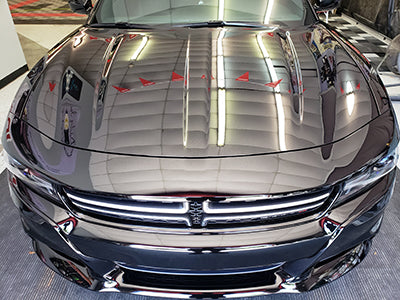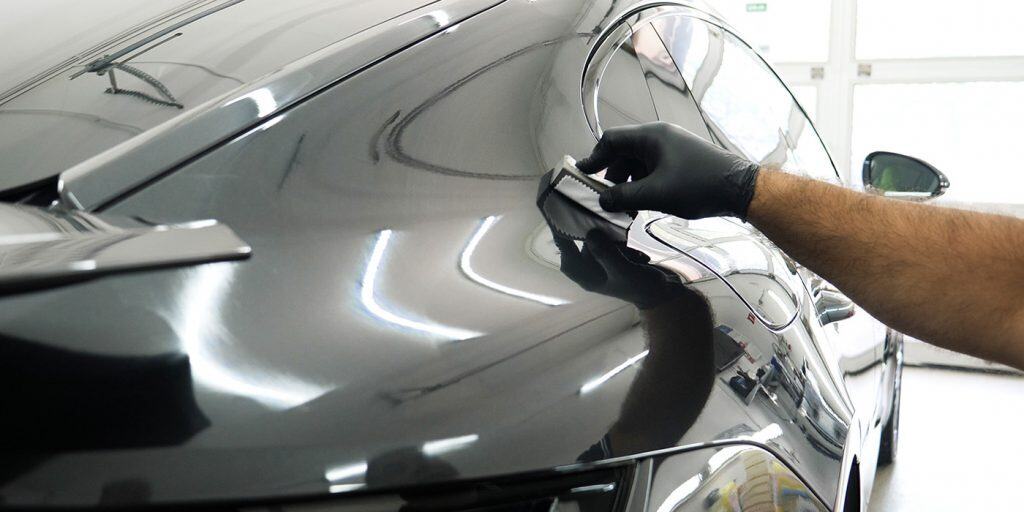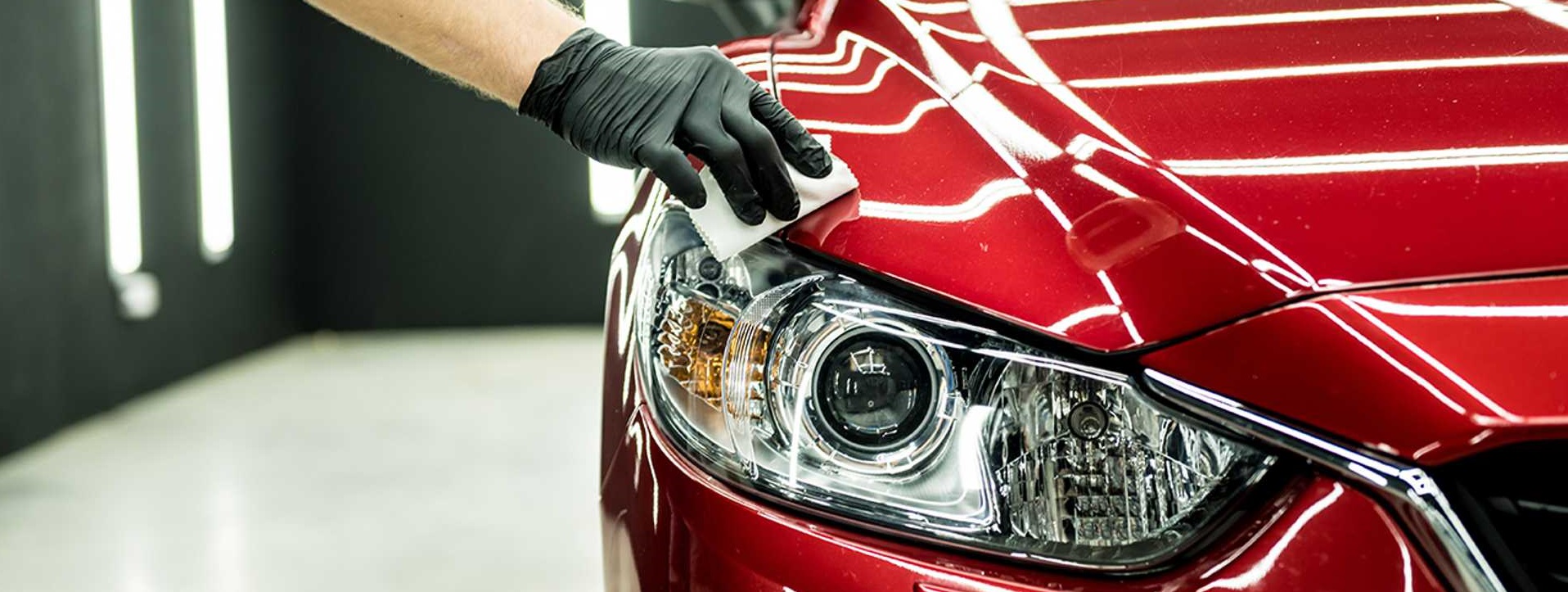How Ceramic Coating Enhances Your Vehicle's Protection and Appearance
How Ceramic Coating Enhances Your Vehicle's Protection and Appearance
Blog Article
Ceramic Finish vs. Standard Wax: Which Gives Better Long-Term Protection?
The argument between ceramic finishings and traditional wax for vehicle protection has gathered considerable interest among vehicle fanatics and specialists alike. While both offer the function of safeguarding paint, their distinctions in sturdiness, application, and lasting upkeep costs might affect a consumer's option. Ceramic finishings boast exceptional long life and resistance to ecological elements, yet the intricacy of their application increases questions concerning access and functionality. As we discover these contrasting choices, it ends up being vital to think about not only the instant advantages but additionally the implications for car treatment over time.
Introduction of Ceramic Layer
Ceramic covering has actually acquired significant popularity among automobile lovers and detailers alike due to its advanced safety top qualities. This ingenious modern technology is made to develop a resilient, hydrophobic shield over a car's paint surface, substantially boosting its resistance to environmental impurities such as dirt, UV rays, and chemical spots. Unlike conventional wax, which gives a momentary layer of defense, ceramic coverings bond at a molecular degree with the paint, providing durable durability-- often expanding past two years with correct maintenance.
The application procedure involves careful preparation of the lorry's surface area, including cleansing and polishing to guarantee optimum bond. When applied, the layer treatments to create a robust layer that not only includes deepness and gloss to the paint yet likewise simplifies upkeep. With its hydrophobic properties, ceramic layer allows water and dust to slide off more quickly, reducing the regularity of washes and reducing the threat of swirl marks.
Furthermore, ceramic layers are offered in numerous solutions, permitting customers to select items tailored to their specific demands and choices. In general, ceramic layer represents a significant development in paint protection innovation, supplying remarkable performance compared to traditional alternatives.
Review of Traditional Wax
Commonly considered as a staple in automobile care, wax functions as a popular selection for those seeking a straightforward method to boost and secure their vehicle's paint - ceramic coating. Automotive wax commonly consists of all-natural active ingredients, such as carnauba, or artificial compounds, made to produce a protective layer externally of the paint. This layer not only boosts the automobile's gloss and radiate but likewise supplies an obstacle versus environmental impurities
The application of wax is normally easy to use, making it obtainable for both professionals and do it yourself fanatics. It can be applied by hand or equipment, allowing for flexibility in the detailing process. As soon as used, wax requires a treating duration, after which it sets to develop a safety covering. Wax is additionally understood for its capacity to fend off water, advertising a beading result that helps in the prevention of water areas and corrosion.
Nevertheless, while wax is reliable for boosting the aesthetic allure of a vehicle, it is necessary to keep in mind that the security it supplies may require more frequent reapplication contrasted to different products, such as ceramic layers. Overall, standard wax continues to be a preferred choice for those focusing on simplicity of use and instant aesthetic enhancement.
Durability and Longevity Contrast
While both ceramic layers and conventional wax deal protective advantages for auto paint, their sturdiness and long life vary substantially. Conventional wax, usually made from all-natural carnauba or synthetic polymers, typically gives a safety layer that lasts about 3 to six months. This fairly short lifespan demands routine reapplication to maintain optimum site protection.
In contrast, ceramic coverings are crafted from sophisticated nanotechnology, creating a covalent bond with the paint surface. This causes a robust, hydrophobic layer that can sustain for 2 to five years, depending on the product and ecological problems. The premium toughness of ceramic finishings is credited to their chemical framework, which offers improved resistance to scrapes, UV rays, and oxidation.

Security Versus Environmental Variables
Safeguarding a car's paint from environmental aspects is crucial for preserving its appearance and value gradually. Autos are constantly subjected to a selection of components, consisting of UV rays, bird droppings, tree sap, acid rain, and road crud, every one of which can compromise the integrity of the paintwork.
Ceramic coatings give a durable protection versus these environmental aggressors. Unlike typical wax, which can break down quickly under UV direct exposure, ceramic coverings develop a long lasting, hydrophobic layer that resists the unsafe effects of sunlight and environmental contaminants. This advanced innovation creates a chemical bond with the automobile's surface area, offering exceptional security that lasts for years, even in extreme problems.
In contrast, ceramic finishes maintain their protective qualities longer, considerably reducing the threat of paint damage and guaranteeing that the car keeps its visual charm. As a result, ceramic coatings are increasingly identified as the remarkable choice for long-term defense against ecological aspects.
Application and Upkeep Differences
The techniques of application and subsequent upkeep for ceramic finishes and conventional wax differ substantially, affecting the total user experience and performance of each item. Ceramic finishes require an even more detailed application procedure, commonly involving surface area prep work that includes cleaning, decontaminating, and polishing the car. As soon as the surface area is prepared, the ceramic finishing is applied in a controlled environment, typically needing expert know-how to make certain correct treating and bonding to the paint.

While both products improve vehicle appearance, the longer-lasting you could try this out protection supplied by ceramic finishes might justify their preliminary investment, regardless of the more demanding application process. On the other hand, traditional wax stays a prominent choice for those looking for a less complex, albeit short-term, service.

Verdict
In conclusion, ceramic finishes demonstrate substantial benefits over conventional wax in terms of longevity and environmental management. With a life-span expanding two to five years and remarkable resistance to UV rays, dirt, and chemical discolorations, ceramic layers provide a much more efficient service for long-lasting lorry maintenance. The application process may need professional experience, the resulting price savings and decreased regularity of reapplication highlight the worth of ceramic coverings for those looking for optimum automobile security.
The discussion in between ceramic coatings and typical wax for lorry protection has amassed substantial focus among vehicle enthusiasts and professionals alike. Unlike typical wax, which offers a momentary layer of defense, ceramic coatings bond at a molecular level with the paint, using durable resilience-- frequently prolonging beyond two years with correct maintenance.
While both ceramic finishings and conventional wax offer safety advantages for automobile paint, their longevity and durability differ significantly. For vehicle enthusiasts looking for lasting defense, ceramic coverings offer a compelling advantage over conventional wax items.
In final thought, ceramic coatings demonstrate significant advantages over conventional wax in terms of durability and environmental protection.
Report this page